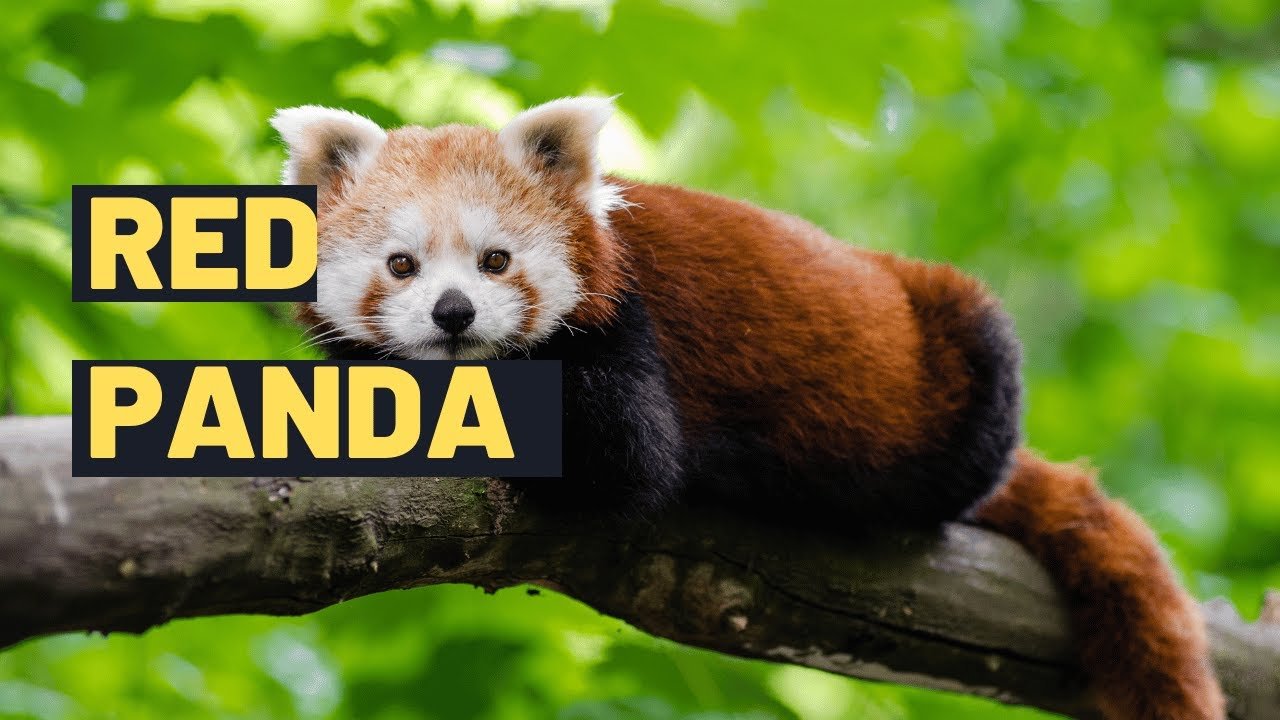Also on the same topic:
- Unveiling the Enigmatic World of Red Pandas
- The Alluring Appearance of Red Pandas
- Exploring the Natural Habitat of Red Pandas
- A Day in the Life of a Red Panda
- The Bamboo Diet of Red Pandas
- Family Matters: Red Panda Reproduction
- Red Pandas in Peril: Conservation Challenges
- Intriguing Insights into the Red Panda World
Unveiling the Enigmatic World of Red Pandas
Red pandas, scientifically known as Ailurus fulgens, are small mammals native to the Eastern Himalayas and Southwestern China. Despite sharing the name 'panda', red pandas are not closely related to giant pandas but belong to their own unique family, Ailuridae. These creatures are distinguished by their striking red fur, bushy tails with alternating red and buff rings, and a face that resembles a mask.
Recent genetic studies have identified two distinct species of red pandas: the Himalayan red panda (Ailurus fulgens) and the Chinese red panda (Ailurus styani), which diverged from each other approximately 250,000 years ago. These species are adapted to live in high-altitude temperate forests, rich in the bamboo that constitutes the majority of their diet.
 Explore Zoos Near You for Adorable Red Panda Encounters
Explore Zoos Near You for Adorable Red Panda EncountersThe Alluring Appearance of Red Pandas
Red pandas are adorned with thick russet fur that covers their back and the upper parts of their limbs, which helps them stay warm in the chilly mountainous regions they inhabit. Their bellies and limbs are darker, almost black, providing them with excellent camouflage in the wild. One of their most distinctive features is their long, bushy tail, which they use for balance when navigating the treetops and for warmth during sleep.
Their facial features are marked by white patches mixed with a reddish-brown color, and their eyes are deeply set and surrounded by dark tear marks, which reduce glare and improve their vision. These adaptations are crucial for their crepuscular lifestyle, primarily active during the dawn and dusk.
Exploring the Natural Habitat of Red Pandas
Red pandas are arboreal and primarily found in the temperate forests of the Himalayas, stretching across Nepal, India, Bhutan, Myanmar, and China. These forests provide the dense foliage and bamboo necessary for their survival. Red pandas are highly adapted to life in the trees; they possess sharp, semi-retractable claws and a “pseudo-thumb,” a modified wrist bone that helps them grasp bamboo and branches.
 Exploring Red Panda Species: Facts, Behavior, Conservation
Exploring Red Panda Species: Facts, Behavior, ConservationEnvironmental changes and human activities pose significant threats to their habitats. Deforestation and the fragmentation of forests due to agriculture and human settlement are reducing the livable area available to these pandas, pushing them towards endangerment.

A Day in the Life of a Red Panda
Red pandas lead a mostly solitary life, coming together only for mating. Their day consists of many hours of feeding on bamboo, supplemented by fruits, insects, and small mammals. Despite their classification as carnivores, red pandas consume a largely herbivorous diet, primarily consisting of bamboo leaves and shoots.
They are most active during the early morning and late afternoon, spending the rest of the day resting in the branches of trees. This crepuscular pattern helps them avoid predators and conserve energy for foraging in their vast territories.
 Empower Red Pandas: Join the Conservation Movement Today
Empower Red Pandas: Join the Conservation Movement TodayThe Bamboo Diet of Red Pandas
The diet of red pandas is predominantly bamboo. They consume up to 200,000 bamboo leaves in a single day. However, their digestive system is more similar to that of a carnivore, which means they have a low absorption rate of the fibrous bamboo, requiring them to eat large quantities to meet their nutritional needs.
Interestingly, red pandas exhibit a unique feeding behavior where they use their pseudo-thumb to skillfully strip the bamboo leaves from the stalks. This adaptation allows them to feed efficiently and maintain their energy levels in the cold, harsh environment they inhabit.
Family Matters: Red Panda Reproduction
Red pandas are generally solitary until the breeding season, which occurs in the early winter months. After a gestation period of about 134 days, females give birth to one to four cubs in a tree hollow or a rock crevice lined with moss, leaves, and other soft plant material.
 Explore the Enchanting World of Red Pandas at Top Zoos
Explore the Enchanting World of Red Pandas at Top ZoosThe cubs are born blind and helpless, relying entirely on their mother for warmth and nourishment. They begin to open their eyes at around 18 days of age and are weaned at about six to eight months. However, they usually remain with their mother until the next breeding season, learning vital survival skills.
Red Pandas in Peril: Conservation Challenges
Red pandas are classified as endangered by the International Union for Conservation of Nature (IUCN). Their population is estimated to be less than 10,000 mature individuals, with a continuing decline due to habitat loss, poaching, and illegal pet trade.
Conservation efforts are in place, focusing on habitat preservation, anti-poaching measures, and community education to protect these adorable creatures. International cooperation and effective local conservation strategies are crucial for the survival of the red panda.
 Explore the Enchanting World of Zoo Pandas: A Fascinating Insight
Explore the Enchanting World of Zoo Pandas: A Fascinating InsightIntriguing Insights into the Red Panda World
Red pandas communicate using various sounds, including whistles, twitters, and huff-quacks. They are also known to be very clean animals, spending significant portions of their day grooming themselves and their offspring with their tongues and paws, much like domestic cats.
Another fascinating aspect of red pandas is their ability to glow under ultraviolet light, a trait they share with some other mammals. This biofluorescence is visible in the dark, adding to the mystical nature of these enchanting animals.
Red pandas are not just adorable; their unique behaviors, dietary habits, and conservation status make them a vital part of the biodiversity in their native habitats. Protecting these creatures is not just about saving a single species but about preserving an entire ecosystem that relies on their presence.
 Discover the Fascinating Red Panda Diet: What Do They Eat to Thrive?
Discover the Fascinating Red Panda Diet: What Do They Eat to Thrive?
If you want to know other articles similar to Uncover the Mysterious Red Panda World: Intriguing Facts and Insights you can visit the Red Panda category.

